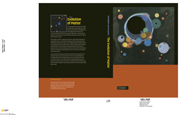Book contents
- Frontmatter
- Contents
- Introduction
- Part I The elements
- 1 Isotopes: weights and abundances
- 2 Introduction to the Universe: the baryonic matter
- 3 Element and isotope abundances: reference collection
- 4 Cosmological nucleosynthesis: production of H and He
- 5 Stellar nucleosynthesis: lower-mass stars and the s-process
- 6 Stellar nucleosynthesis: r- and associated processes
- 7 Timing of stellar nucleosynthesis
- 8 Chemical evolution of the Galaxy
- Part II Early solar system: nebula formation, evolution and lifetime
- Part III Accretion of the Earth
- Part IV Global evolution of the Earth
- References
- Glossary
- Abbreviations
- Meteorites, rocks and minerals
- Index
8 - Chemical evolution of the Galaxy
Published online by Cambridge University Press: 04 September 2009
- Frontmatter
- Contents
- Introduction
- Part I The elements
- 1 Isotopes: weights and abundances
- 2 Introduction to the Universe: the baryonic matter
- 3 Element and isotope abundances: reference collection
- 4 Cosmological nucleosynthesis: production of H and He
- 5 Stellar nucleosynthesis: lower-mass stars and the s-process
- 6 Stellar nucleosynthesis: r- and associated processes
- 7 Timing of stellar nucleosynthesis
- 8 Chemical evolution of the Galaxy
- Part II Early solar system: nebula formation, evolution and lifetime
- Part III Accretion of the Earth
- Part IV Global evolution of the Earth
- References
- Glossary
- Abbreviations
- Meteorites, rocks and minerals
- Index
Summary
Introduction: processes governing galactic chemical evolution
After the Big Bang, stellar nucleosynthesis became by far the major element-producing factory. During the mass-loss episodes experienced by most stars, newly produced elements are (partially) transferred to the interstellar medium (ISM), which thereby evolves chemically. The element yields and the transfer mechanisms are both dependent on stellar masses and evolution (Chapters 5 and 6).
The interstellar medium initially consisted almost exclusively of primordial H and He, and this low metallicity favoured the accretion of very massive stars, ∼ 30 M⊙ < M < ∼ 300 M⊙. Even though adequate models of these stars have not yet been developed, they are considered to have a very short life. The total mass of the ejected heavy elements as well as their abundance pattern strongly depend on a stellar model, especially on the details of stellar death. In the case of a successful explosion, heavy r-process and Fe-peak elements are abundant in stellar ejecta whereas the inner core is converted into a neutron star. In the other case, only products of explosive burning in the outer shells are ejected; most material falls back onto the core to generate a massive black hole that could play an important role in the subsequent formation of a galaxy. In both cases the amount of material ejected into the interstellar medium could be enough to overcome the metallicity threshold in a stellar neighbourhood for the formation of low-mass stars, ΣAZ ∼ −3; therefore small low-metallicity long-lived stars could have sampled an array of elements generated by one or very few progenitor(s) (Silk and Bouwens, 2001; Bromm and Larson, 2004; Schneider, 2006; Cowan and Sneden, 2006).
- Type
- Chapter
- Information
- The Evolution of MatterFrom the Big Bang to the Present Day, pp. 83 - 98Publisher: Cambridge University PressPrint publication year: 2008



